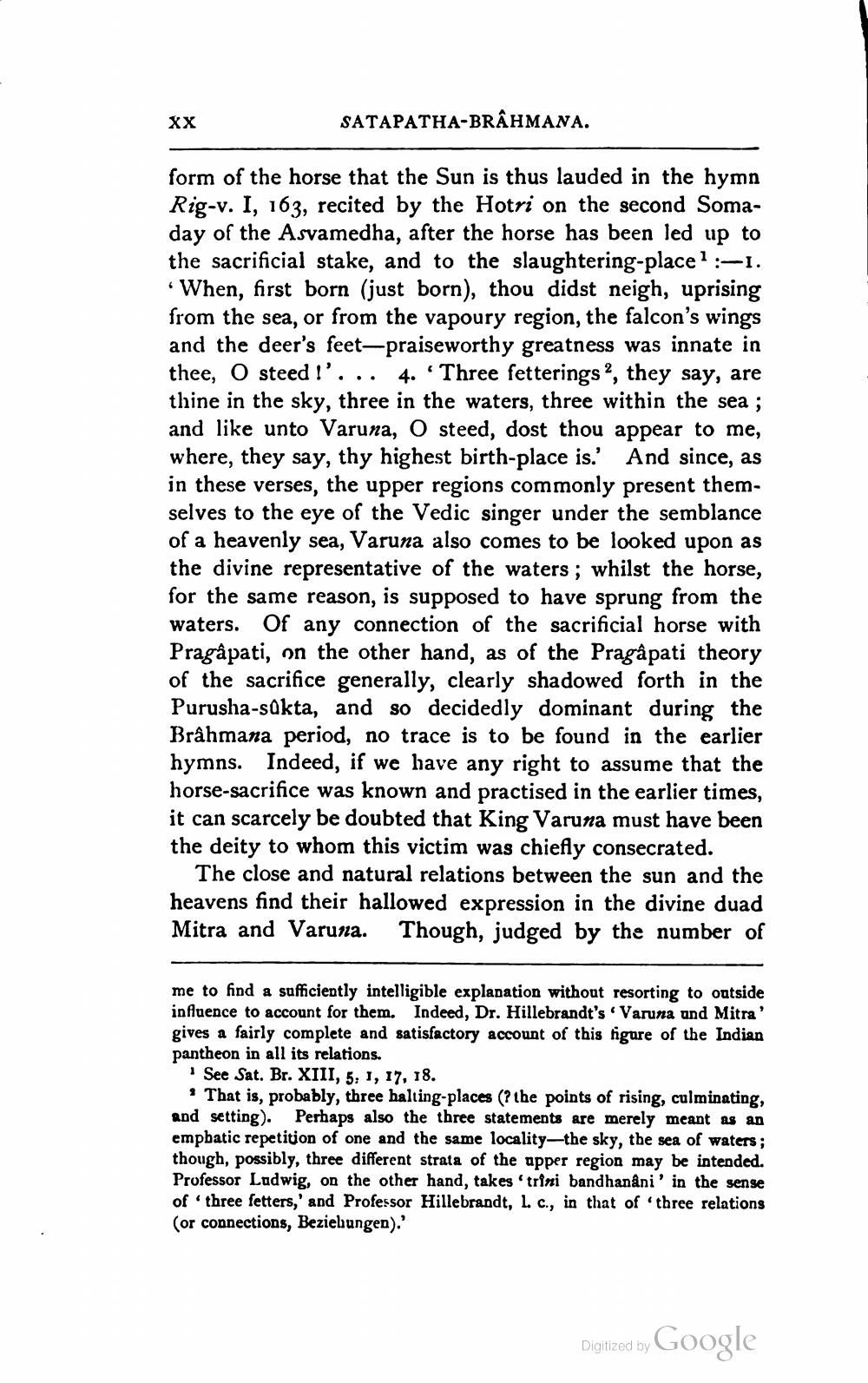________________
SATAPATHA-BRAHMANA.
form of the horse that the Sun is thus lauded in the hymn Rig-v. I, 163, recited by the Hotri on the second Somaday of the Asvamedha, after the horse has been led up to the sacrificial stake, and to the slaughtering-place1:-1. 'When, first born (just born), thou didst neigh, uprising from the sea, or from the vapoury region, the falcon's wings and the deer's feet-praiseworthy greatness was innate in thee, O steed!'... 4. Three fetterings2, they say, are thine in the sky, three in the waters, three within the sea; and like unto Varuna, O steed, dost thou appear to me, where, they say, thy highest birth-place is.' And since, as in these verses, the upper regions commonly present themselves to the eye of the Vedic singer under the semblance of a heavenly sea, Varuna also comes to be looked upon as the divine representative of the waters; whilst the horse, for the same reason, is supposed to have sprung from the waters. Of any connection of the sacrificial horse with Pragâpati, on the other hand, as of the Pragâpati theory of the sacrifice generally, clearly shadowed forth in the Purusha-sûkta, and so decidedly dominant during the Brahmana period, no trace is to be found in the earlier hymns. Indeed, if we have any right to assume that the horse-sacrifice was known and practised in the earlier times, it can scarcely be doubted that King Varuna must have been the deity to whom this victim was chiefly consecrated.
The close and natural relations between the sun and the heavens find their hallowed expression in the divine duad Mitra and Varuna. Though, judged by the number of
XX
me to find a sufficiently intelligible explanation without resorting to outside influence to account for them. Indeed, Dr. Hillebrandt's 'Varuna und Mitra' gives a fairly complete and satisfactory account of this figure of the Indian pantheon in all its relations.
1 See Sat. Br. XIII, 5, 1, 17, 18.
'That is, probably, three halting-places (? the points of rising, culminating, and setting). Perhaps also the three statements are merely meant as an emphatic repetition of one and the same locality-the sky, the sea of waters; though, possibly, three different strata of the upper region may be intended. Professor Ludwig, on the other hand, takes 'trini bandhanâni' in the sense of three fetters,' and Professor Hillebrandt, 1. c., in that of three relations (or connections, Beziehungen).'
Digitized by
Google




